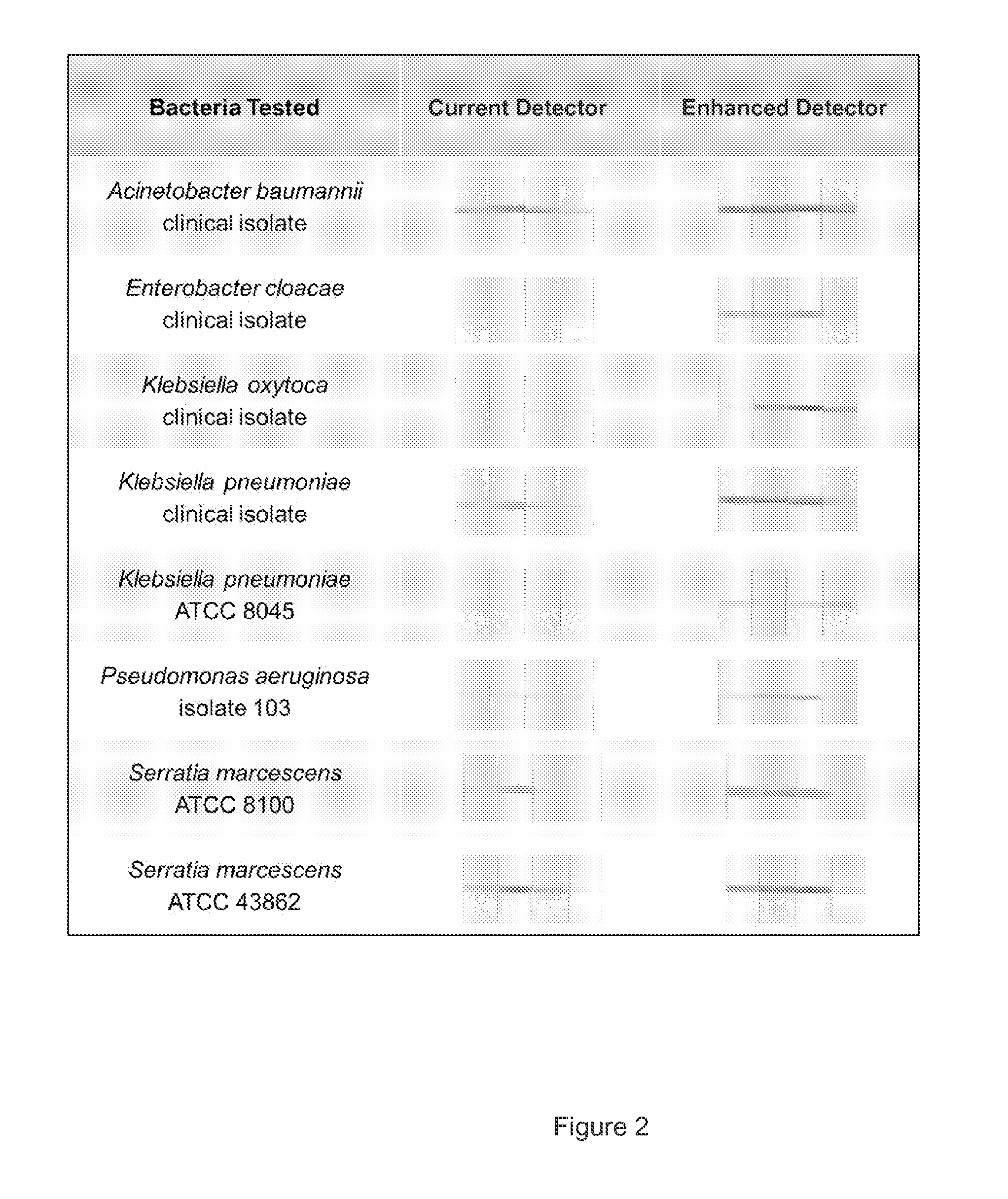Multi-analyte assay
- Summary
- Abstract
- Description
- Claims
- Application Information
AI Technical Summary
Benefits of technology
Problems solved by technology
Method used
Image
Examples
example 1
[0099]We measured the visual signal generated from different sized (40 nm and 80 nm) gold particles in a model lateral flow system to determine which particles gave the greatest signal intensity response per particle (FIGS. 1A-1C). The system was designed to capture a high proportion of the particles flowing through the strip, to give an indication of the visual signal produced by particles of varying sizes. A lateral flow device according to the invention was used. In this model the flow device utilized an IgG antibody striped on a Millipore nitrocellulose membrane as a capture binding agent, and protein A coated gold particles flowing through the strip. For a given number of particles added to the reaction. An 80 nm gold particle resulted in a higher contrast intensity purple line as compared to the red / pink line produced by the 40 nm gold particles, making the lines from the 80 nm beads easier to visualize and interpret. FIGS. 1B and 1C are images of the strips produced using var...
example 2
[0101]To test the effectiveness of the gold particles of different sizes, we constructed a model immunoassay system using a mixture of antibodies raised against a variety of Gram-negative and Gram-positive bacteria. We coupled the antibodies to 80 nm colloidal gold (“enhanced detector”) particles and compared their performance to 40 nm colloidal gold (“current detector”) particles. We prepared four levels of bacterial lysates for each of eight organisms by making tenfold dilutions starting at 108 CFU / mL using a buffered solution. For each lysate level, we mixed 20 μL of current detector particles or enhanced detector particles (ODS), 20 μL of bacterial lysate, and 20 μL of a running buffer containing detergents in wells of a 96-well plate. A 0.5 cm dipstick cut from a Millipore nitrocellulose membrane card striped with the same antibody and laminated to an upper absorbent wick was inserted into each well and incubated until all of the liquid flowed into the dipstick. A chase of 100 ...
example 3
Synthesis of a Pan-Generic Reagent Particle
[0105]Rabbit IgG is diluted to desired concentrations in 2-fold concentrated binding buffer. Those of skill in the art will appreciate that, any binding buffer suitable for binding IgG to Protein A can be used. Typical concentrations for coupling range from 0.1 to 1 μg / ml*OD of gold. If 5 ml of gold colloid at OD555=10 is to be coupled with a ratio of 0.1 ug / ml*OD, then IgG is diluted to a concentration of 1.0 ug / ml in a volume of 5 ml. Diluted antibody is mixed with an equal volume of 80 nm gold particles coated with protein A (sPA) concentrated to twice the desired final desired concentration of particles. Incubation is for a minimum of one hour before testing, but overnight incubation also could be advantageous.
PUM
| Property | Measurement | Unit |
|---|---|---|
| Diameter | aaaaa | aaaaa |
| Diameter | aaaaa | aaaaa |
| Diameter | aaaaa | aaaaa |
Abstract
Description
Claims
Application Information
 Login to View More
Login to View More - R&D
- Intellectual Property
- Life Sciences
- Materials
- Tech Scout
- Unparalleled Data Quality
- Higher Quality Content
- 60% Fewer Hallucinations
Browse by: Latest US Patents, China's latest patents, Technical Efficacy Thesaurus, Application Domain, Technology Topic, Popular Technical Reports.
© 2025 PatSnap. All rights reserved.Legal|Privacy policy|Modern Slavery Act Transparency Statement|Sitemap|About US| Contact US: help@patsnap.com


